Subtribe Diuridinae Higher classification Orchids | Family Orchidaceae Scientific name Diuris Rank Genus | |
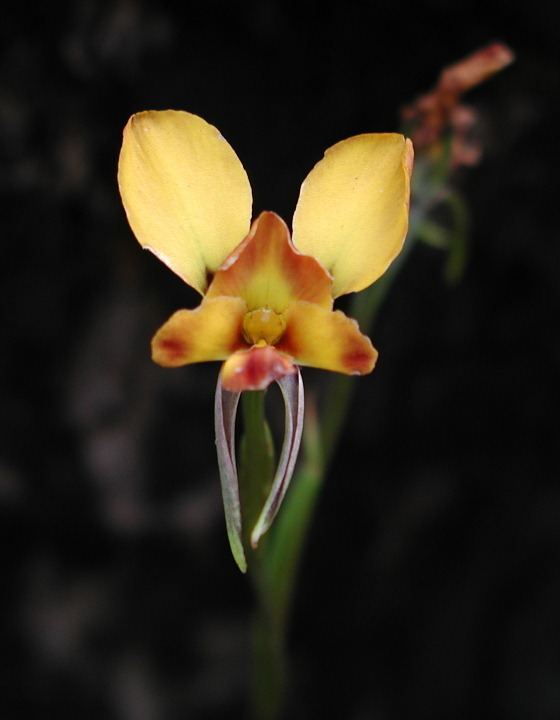 | ||
Lower classifications Diuris drummondii, Diuris pardina, Diuris corymbosa, Diuris behrii, Diuris brumalis | ||
Arcadia diuris
Diuris, commonly known as donkey orchids, is a genus of more than sixty species of flowering plants in the orchid family, Orchidaceae and is endemic to Australia apart from one species endemic to Timor. The name "Diuris" refers to the hanging sepals but the common name derives from the ear-like petals common to all species. All have mainly yellow flowers with darker markings and are thought to mimic nectar-producing flowers which open at the same time.
Contents
- Arcadia diuris
- Diuris thelymitra nuda
- Description
- Taxonomy and naming
- Distribution and habitat
- Ecology
- Species
- Natural hybrids
- References

Diuris thelymitra nuda
Description
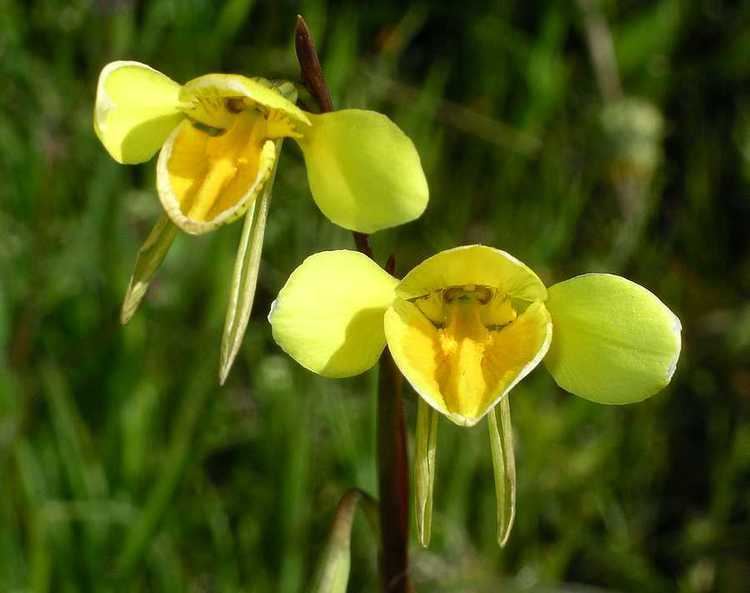
Orchids in the genus Diuris are terrestrial, perennial, deciduous, sympodial herbs, usually with a few inconspicuous, fine roots and one or two tubers lacking a protective sheath. The stem is short, erect and unbranched with a leaf-like cataphyll at each node. There are between one and ten grass-like leaves at the base of the plant.

The inflorescence is a raceme with a few to many brightly coloured, resupinate flowers on a wiry stalk. The dorsal sepal is shorter but wider than two lateral sepals and forms a hood over the column. The long, narrow, lateral sepals hang like a pair of tails below the labellum. The petals are different from the sepals, having a narrow base with the main part widely expanded, in the form of donkey ears. As is usual in orchids, one petal is highly modified as the central labellum, differing markedly from the other petals and sepals. The labellum has three distinct parts with the central part folded and the lateral parts arranged on either side of the column, often spreading widely, sometimes with a scalloped or wavy edge. The column is short with narrow wings. Flowering time depends on species but most species flower between September and November. One of the earliest to flower, D. brumalis flowers in June and D. emarginata sometimes flowers as late as January. The fruit which follows flowering is a thin-walled, dehiscent capsule containing up to 100 winged seeds.
Taxonomy and naming
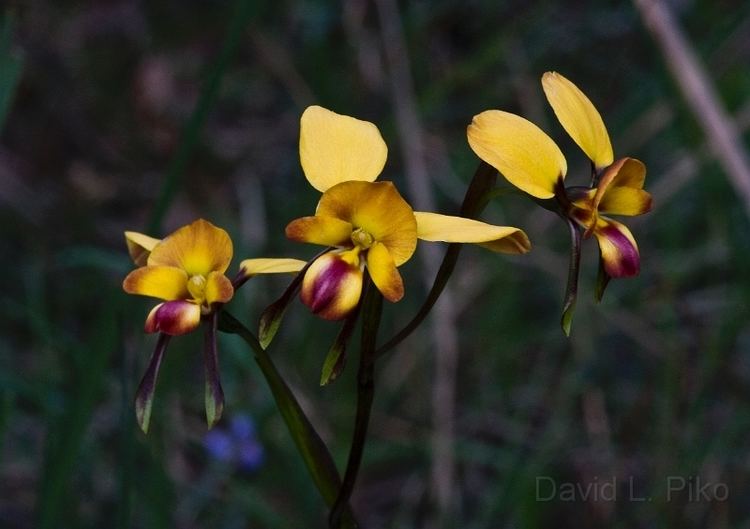
The genus Diuris was first formally described in 1798 by James Edward Smith and the description was published in Transactions of the Linnean Society of London. Smith did not nominate a type species.

The scientific name is derived from the Ancient Greek prefix di-, meaning "two" and ouris meaning "tail" referring to the hanging lateral sepals.
Distribution and habitat
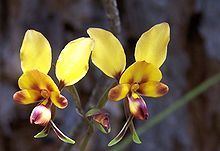
Donkey orchids occur in all Australian states, but not the Northern Territory with one species (D. fryana) found in Timor. In New South Wales, most species grow among grasses in sclerophyll forest. In Western Australia, most grow in moist places such as coastal swamps or near granite outcrops. Donkey orchids usually grow as individual plants or in loose colonies and most occur at low altitudes, although D. monticola grows at up to 1,800 m (6,000 ft). Some species flower more profusely after fire and D. purdiei will only flower following a summer fire. In fire-prone areas, the tubers lie dormant in the soil and are not harmed by bushfires.
Ecology
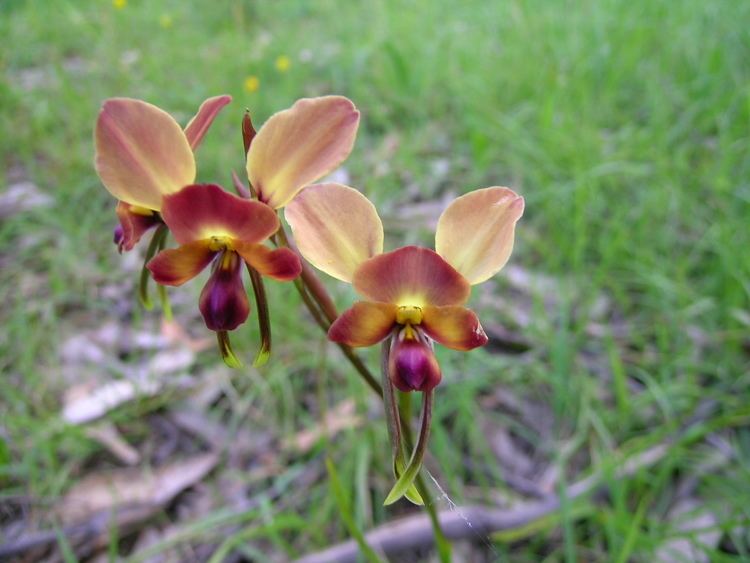
Donkey orchids are coloured like flowers that attract pollinating insects such as wasps, bees and flies but no Diuris produce nectar and very few have a scent. It is thought that Diuris species deceive insect by falsely advertising the presence of food and this hypothesis is supported by experiments on only one species, D. pardina.
Species
The following species are listed in the Index Kewensis:
